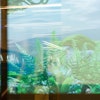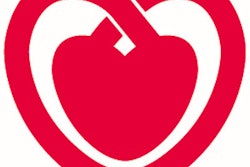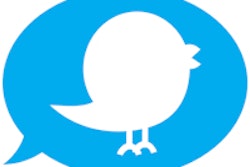
For many patients, the crucial role of the radiologist within the healthcare system still remains in the dark. For a long time, this apparent tendency of radiologists to remain hidden was also visible on the web and in social media. It's not a coincidence that some other medical specialities such as plastic surgeons and cardiologists, who have more contact with patients in real life, have been the pioneers in the field of social media related to physicians.
When following Twitter, however, radiologists seem to have awakened from their lethargy, because their presence on this platform is significantly growing. Whereas major radiological societies and journals are already sharing links to relevant published or in-press articles, a growing number of individual radiologists are actively sending tweets and participating in tweet chats, not only on an academic level,1, 2 but also in various discussions related to medical imaging, both with colleagues and a more general public.
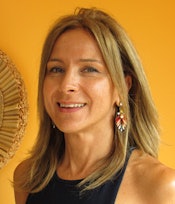 Dr. María Jesús Díaz Candamio, PhD.
Dr. María Jesús Díaz Candamio, PhD.Social media has made experts more accessible than ever, allowing the exchange of thoughts and experiences as easily with colleagues as with renowned professionals, some whom they may have never met. This also applies to radiology because many of the most well-known specialists have a reachable Twitter profile -- at least in the U.S.
Twitter not only is an almost infinite learning resource, but also an amazing tool for exchanging information with colleagues, and even with patients. Communication with patients is becoming increasingly more important for radiologists, both with the intention to provide information and to improve the overall patient experience.3 Discussions about controversial issues that are of concern to the public opinion, such as breast cancer screening guidelines4 and gadolinium deposits in the brain and skeleton,5 are very attractive for patients. They like to obtain reliable information from scientific societies and radiological professionals. Currently, the growing role of artificial intelligence's role in diagnostic imaging6 is another popular topic.
In contrast, some absurd debates related to radiology can also be found, such as postings about pigeons reporting mammograms.7 Sometimes radiologists intervene in such discussions that are based upon fake news, often in an ironic manner. Similar to what plastic surgeons are doing, radiologists could possibly also counteract the effects of such intrusions disseminating nonevidence-based news by using the hashtag #EvidenceNotOpinion.8
Advocating equity in medicine is another great feature of Twitter. An example of such action was the success of #IlookLikeASurgeon in the world of surgery, in which men remain in the majority. Female surgeons shared this hashtag accompanied by their own pictures, with the intention to remind the general public that a growing number of women are part of the surgical community. During the ACR 2017 meeting, the hashtag #HeForShe was used to illustrate that male radiologists support their female peers, who are still in a relative minority. Moreover, the hashtag #radXX is being used to label tweets related to women in the diagnostic imaging field.
Improving general knowledge
The potential of social media to improve the general knowledge and public awareness of cancer has been demonstrated. The successes that were achieved on Twitter concerning the topic of breast imaging provides an example for increasing the attention among the general public and politicians regarding prostate cancer .9 Tweets in which women express their feelings about mammography has been used as a tool to analyze that experience.10
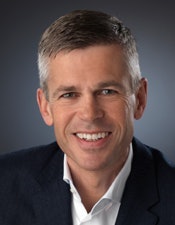 Dr. Erik Ranschaert, from Holy Heart Hospital in Mol, Belgium.
Dr. Erik Ranschaert, from Holy Heart Hospital in Mol, Belgium.Twitter is also being used as a tool to make radiologists' work better recognized and to help radiologists come out of the dark,11 with recent efforts using the hashtags #RadiologistsHaveAFace and #RadsHaveAFace.
Radiologists are aware of the educational opportunities offered by social media.12 However, the actual use of Twitter for this purpose is still relatively scarce, and therefore we think the use of Twitter should be encouraged, both for academic and nonacademic professional purposes.
Following the recently published RANSOM study, the European radiological community seems to be less active on Twitter than their counterparts in the U.S. That could be partially explained by the fact Twitter is more popular in the U.S., but also could be the result of a linguistic bias. Europeans not only tweet in English, but also in many other languages, whereas most scientific knowledge is published in English; the same is true about information distributed by Twitter.
Nevertheless, Europeans probably miss valuable information that is disseminated by this medium in other languages, also about radiological issues. Although we might have the impression that people are not frequently sharing non-English tweets related to radiology, it's a daunting task to detect interesting tweets related to radiology but written in other languages.
How can we verify this? Possibly such messages could be made more easily searchable if authors would simply incorporate #radiology in all their radiology-related tweets, in any language. This idea of using recognizable hashtags and even a more standardized hashtag lexicon in radiology-related tweets has already been proposed by U.S. radiologist Dr. Matt Hawkins in his "Radiology Hashtag Ontology" project, which is an effort to more efficiently organize radiology-related content from social media. Its goal is to enable as many users as possible to meaningfully contribute to conversations on imaging-related healthcare. A standard lexicon for radiology tweets has thus been proposed in order to make tweets more traceable and usable for radiologists.17
On the other hand, Twitter's smart tweet translation engine can instantly translate the tweets to any language. Also for those posts used for sharing interesting images, the linguistic problem of reaching the international radiological community becomes smaller. Of course, users have to be aware that only anonymized images should be sent when taking into account the existing European privacy regulations (the EU's General Data Protection Regulation, or GDPR).
It would be fascinating if the global radiological community would be more willing to share its information by including the radiology hashtag (#radiology), so that all radiology-related tweets could be found. Spanish-speaking radiologists, for example, who are currently using #radiologia in their tweets, could also start using #radiology and other related hashtags13,14. This would certainly contribute to the further integration of the global radiological community, in which knowledge, opinions, and experience can be shared with specialists from all over the world.
At medical conferences, social media are an increasingly popular tool for quick sharing of relevant information, as was the case at the last RSNA, American Roentgen Ray Society (ARRS), and American College of Radiology (ACR) meetings. During these meetings, a more active participation of attendees through Twitter was successfully encouraged.15 This is also the case for European meetings such as the ECR.
For several reasons, however, the European enthusiasm for actively using social media during such events seems less evident. This could be possibly partially explained by controversies related to copyright issues and other concerns related to intellectual property infringement,16 but the main reason could be related to the multitude of languages used at European meetings, probably to a greater extent than at U.S.-based meetings.
We shouldn't forget that currently the ESR (which organizes the ECR meeting) is the largest radiological society in the world, counting more than 69,000 members from across the globe. Many radiologists prefer to tweet in their own language to better communicate with their immediate peers. Conference organizers promote conference-specific hashtags such as #ECR2017, encouraging attendants to live-tweet key information.
Using these common and searchable hashtags makes it easier to participate in conversations revolving around interesting topics, even when using a language different from English. Again, these conversations are facilitated by the translation function that can be used for reading each tweet in any language. The radiological community cannot afford to waste or ignore the information and experience of non-English speaking tweeters.
Twitter also plays an invaluable role in contributing to the radiologists' individual brands, allowing them to publish news about their activities, thoughts, and scientific and educational work, including links to their articles, websites, and even videos. Some radiologists are very active on Twitter, and during meetings such activity is being measured, which sometimes results in a tweet with a list of "top influencers" of that meeting. A platform that is used for measuring such tweet activity among radiologists is Symplur. Participants and even press are actively encouraged to follow these "influencers" on Twitter during meetings.
But Twitter is also useful for any radiologist who merely wants to be informed about his/her profession by being a simple follower. This makes sense for many radiologists in European countries, where radiologists often work in public health systems and usually are less interested in creating or promoting their own services. But they could be attracted by the idea of staying informed with the most recent news about their specialty or subspecialty.
Twitter enhances the possibilities to connect with other tweeters by means of the underlying ranking algorithm, powered by deep neural artificial intelligence networks. It automatically proposes the most interesting timelines to follow to each Twitter-user, by taking into account the previous activities of that user. In addition, each user is offered to follow other tweeters, depending on the people he or she follows, which increases the networking possibilities. Artificial intelligence helps the radiologists once again.
Twitter allows professionals to stay informed about the main papers that are published in their area of interest, and in many other fields. That's the greatest thing about Twitter: It doesn't create separate watertight compartments, but it allows us to enrich ourselves with issues that are also indirectly related to our fields of interest. This is essential in medicine, where the growing tendency of subspecialization has the disadvantage of making physicians lose the more holistic perspective of the patient.
On the other hand, Twitter also allows its users to interact with people from any country with an array of professional or nonprofessional interests. It supports the development of critical thinking and helps widening vision and perception of reality.
Radiologists are still underrepresented in social media, but as explained, several efforts have been made recently to assist radiologists in familiarizing themselves with Twitter as a professional tool and to provide them with information about the potential benefits, challenges, and inherent risks of the platform, as well as with useful tips on how to use Twitter safely and efficiently.17
The potential of Twitter as a source of global knowledge is huge. Broadening the horizons of radiological tweeters with colleagues of other specialties and the general public, not only from the English-speaking world, is desirable. We all share similar motivations: to advance in our profession, to promote equity, to become more visible, and to increase our patient's engagement. Stepping beyond the idiomatic and specialty borders will provoke an even more interesting Twitter experience, one from which we will all benefit.
Dr. María Jesús Díaz Candamio, PhD, is a radiologist at the Complexo Hospitalario Universitario de Ferrol in A Coruña, Spain. Twitter handle: @Vilavaite. Dr. Erik R. Ranschaert, PhD, is chief, department of radiology, Holy Heart Hospital in Mol, Belgium. Twitter handle: @eranrad.
The comments and observations expressed herein do not necessarily reflect the opinions of AuntMinnieEurope.com, nor should they be construed as an endorsement or admonishment of any particular vendor, analyst, industry consultant, or consulting group.
References
- Hawkins CM, Hunter M, Kolenic GE et al. Social Media and Peer-Reviewed Medical Journal Readership: A Randomized Prospective Controlled Trial. J Am Coll Radiol. 2017;14(5):596-602.
- Kelly BS, Redmon CE, Nason GJ et al. The Use of Twitter by Radiology Journals: An Analysis of Twitter Activity and Impact Factor. 2016 Nov;13(11):1391-1396.
- Hawkins CM, DeLaO AJ, Hung C Social Media and the Patient Experience. J Am Coll Radiol. 2016;13(12 Pt B):1615-1621.
- Eby PR. Evidence to Support Screening Women Annually. Radiol Clin North Am, 2017;55(3):441-456.
- Murata N , Murata K, Gonzalez-Cuyar LF et al. Gadolinium tissue deposition in brain and bone. Magnetic Resonance Imaging, 2016;34(10):1359-1365.
- Jha S, Topol, EJ Adapting to Artificial Intelligence. Radiologists and Pathologists as Information Specialists. JAMA, 2016;316(22):2353-2354.
- Levenson RM, Krupinski EA, Navarro VM et al. Pigeons (Columba livia) as Trainable Observers of Pathology and Radiology Breast Cancer Images. Coles JA, ed. PLoS ONE. 2015;10(11):e0141357.
- Branford OA; Kamali P; Rohrich RJ; Song DH; Patrick Mallucci; Daniel Z Liu; Dustin Lang; Kristi Sun; Miran Stubican; Samuel J Lin #PlasticSurgery. Plastic and Reconstructive Surgery. 2016;138:1354-1365.
- Loeb S, Stork B, Gold HT, et al. Tweet this: How advocacy for breast and prostate cancers stacks up on social media. BJU Int. 2017 May 4. [Epub ahead of print]
- Rosenkrantz AB, Labib A, Prabhu V. What Do Patients Tweet About Their Mammography Experience? Academic Radiology. 2016;23(11):1367-1371.
- Neiman HL1. Face of Radiology campaign. Acad Radiol. 2009 May;16(5):517-520.
- Ranschaert ER, Van Ooijen PM, McGinty GB et al. Radiologists' Usage of Social Media: Results of the RANSOM Survey. J Digit Imaging. 2016;29:443-449.
- Radiology Tag Ontology. https://www.symplur.com/healthcare-hashtags/ontology/radiology/
- Hawkins CM Radiology social media hashtag ontology: codifying online data. JACR. 2016;13(1):111-113.
- ACR Annual Meeting program. https://www.acr.org/Annual-Meeting/Program/Social-Media. Accessed 3 July 2017.
- Groves, T. Tweeting and rule breaking at conferences. BMJ. 2016;353:i3556.
- Ranschaert ER, van Ooijen PMA, Lee S et al. Social media for radiologists: an introduction. Insights Imaging. 2015;6:741-747.



